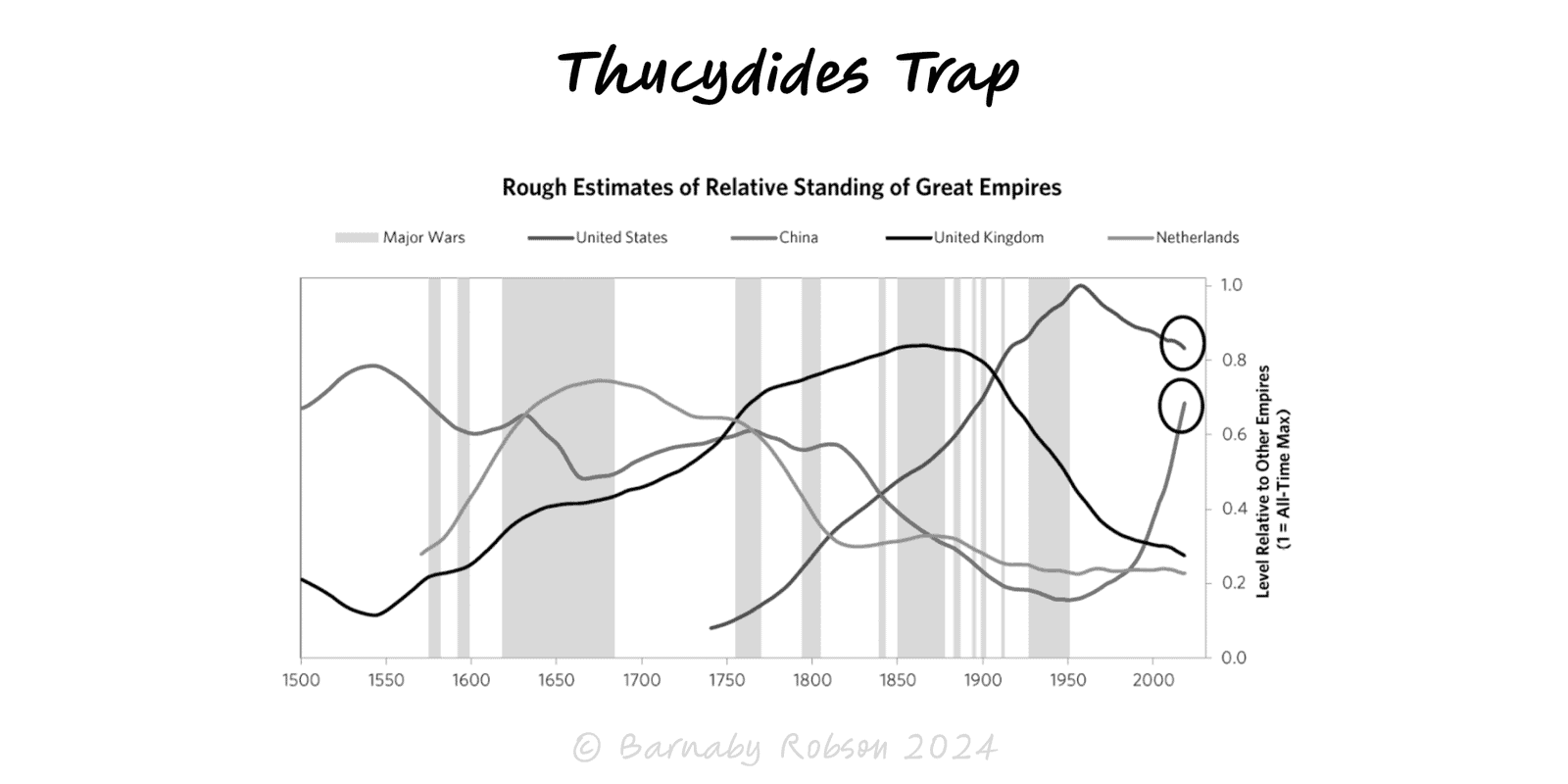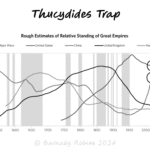Thucydides Trap
Graham T. Allison, drawing on Thucydides

Thucydides noted that Sparta’s fear of a rising Athens made war more likely. Modern versions generalise this: large power transitions – in states or markets – raise the risk of spirals, as incumbents try to contain and challengers push to revise the order. It is a tendency, not a law: institutions, credible commitments and off-ramps can keep rivalry bounded. See also power transition theory and security dilemma.
Incumbent incentives – defend status, alliances, standards and rents; consider pre-emption or denial moves.
Challenger incentives – seek access, prestige, resources and rule-setting power; press grey-zone advantages.
Perception gaps – each side reads the other’s deterrence as aggression and its own moves as “defensive”.
Escalation ladders – tit-for-tat across economic, technological, information and military domains.
Stabilisers – credible communication channels, issue-linkage trades, arms control, economic interdependence, verified red lines.
Geopolitics – assessing great-power rivalries, alliance strain, arms races, tech export controls.
Business strategy – platform incumbents vs insurgents, standard wars, distributor lock-in, regulatory contests.
Org politics – legacy business units vs high-growth bets competing for mandate and budget.
Map the structure – capabilities, growth rates, coalition depth, choke points, and contested standards on both sides.
Name red lines and goals – write what each side must protect vs where it can trade concessions.
Design guardrails – hotlines, incident codes of conduct, crisis playbooks, transparency mechanisms, independent verification.
Shift from zero-sum to bounded rivalry – create issue-linkage (give on X, gain on Y), phased de-escalation, confidence-building steps.
Avoid self-fulfilling moves – limit symbolic humiliations, surprise doctrinal shifts, and brittle ultimatums.
Business analogue – pick winnable wedges rather than frontal assaults; interoperate where it serves you; pre-commit to quality and reliability to win regulator and partner trust.
Plan off-ramps – concrete conditions to pause or reverse escalatory policies; publish them to reduce misreadings.
Determinism – treating the trap as destiny. Leadership and institutions matter.
Selection bias – counting only the wars and ignoring peaceful transitions.
Over-militarising – neglecting economics, tech, standards and narratives where contests are decided.
Domestic politics blind spot – leaders with fragile coalitions take riskier stands; model internal constraints.
Escalation by accident – opaque red lines and poor signalling raise hazard rates.
Corporate misuse – invoking “inevitable war” to justify reckless strategy or ethics lapses.
